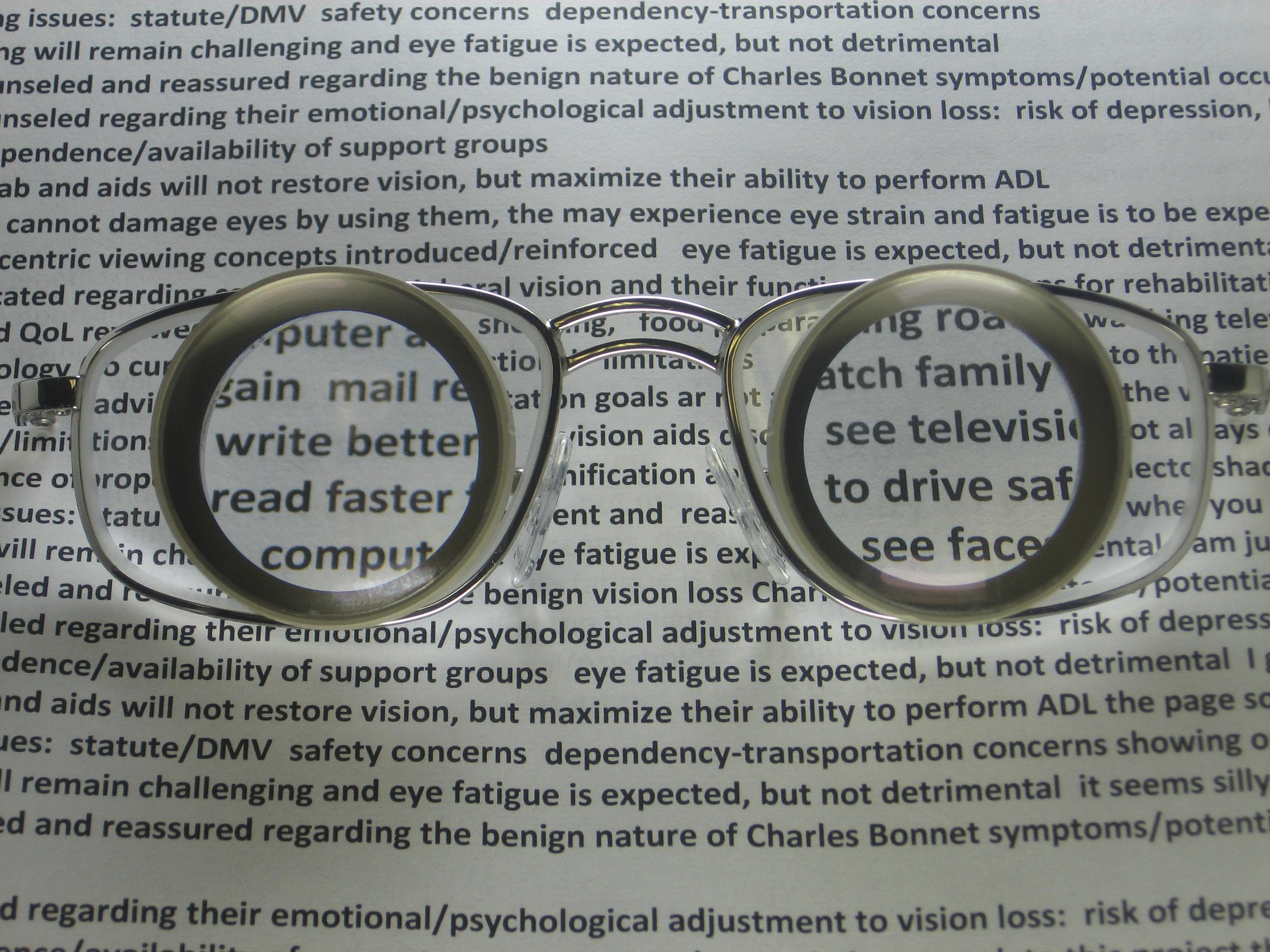
Understanding Low Vision
Causes and Effects
At Independence Again Low Vision, we are committed to providing comprehensive support and guidance to individuals experiencing vision loss. Understanding the causes of low vision is crucial to navigating the challenges and exploring opportunities for improvement.
What is Low Vision?
Low vision is a condition in which an individual’s vision cannot be fully corrected by glasses, contact lenses, medication, or surgery. It affects millions of people worldwide, impacting daily activities and quality of life.
Common Causes of Low Vision
Age-Related Macular Degeneration (AMD)
A leading cause of low vision in older adults. AMD affects the central part of the retina, causing blurred or distorted vision.
Glaucoma
A group of eye conditions that can damage the optic nerve, leading to progressive vision loss if not properly managed.
Vision Loss Due to Stroke
Stroke can cause hemianopsia, a loss of part of the visual field
Myopic Degeneration
Severe nearsightedness that progressively worsens, causing gradual vision decline.
Fuchs’ Corneal Dystrophy
A genetic condition that causes corneal swelling, resulting in hazy or cloudy vision, glare, and discomfort.
Diabetes
Diabetic retinopathy, caused by high blood sugar levels, can damage the blood vessels in the retina, leading to vision loss.
Retinitis Pigmentosa
A genetic disorder affecting the retina’s ability to respond to light, resulting in progressive vision loss.
Optic Atrophy
Damage to the optic nerve caused by inflammation, congenital defects, or high intraocular pressure often associated with glaucoma.
Macular Hole
Can occur with aging, injury, or conditions like diabetic eye disease or retinal detachment, resulting in central vision loss.
Cataracts
While often treated successfully, cataracts can sometimes cause irreversible vision loss if left untreated.
Trauma
Eye injuries can cause low vision, depending on the severity of the injury.
Nystagmus
Involuntary and repetitive eye movements that can result from genetic factors, strabismus, multiple sclerosis, or traumatic brain injury.
Fuchs’ Corneal Dystrophy
A genetic condition that causes corneal swelling, resulting in hazy or cloudy vision, glare, and discomfort.
Genetic Conditions
Some genetic conditions lead to low vision from birth or early in life, including:
Albinism: Lack of pigments in the eye affecting visual function.
Juvenile Macular Degeneration: Conditions like Stargardt’s disease and Best disease that lead to central vision loss.
Achromatopsia: Lack of photoreceptors causing decreased acuity and poor color perception.
Finding Support and Solutions
At Independence Again Low Vision, we offer personalized strategies, adaptive devices, and therapies designed to help individuals manage their vision loss effectively. Dr. Lindell works closely with each patient to create customized plans for living independently and confidently with low vision.
How to Prepare for Your Visit
Bring Relevant Documentation: Include medical records and any previous diagnoses related to your vision.
Bring Current Assistive Devices: Any glasses, magnifiers, or electronic aids you are currently using.
Prepare Questions: Write down any concerns or questions about low vision and available treatments.
Explore Assistive Technologies: Ask about tools like enhanced lighting, specialized glasses, and electronic aids.
We are here to support you every step of the way. Contact us today for a free phone consultation and discover how we can help you thrive with low vision.
